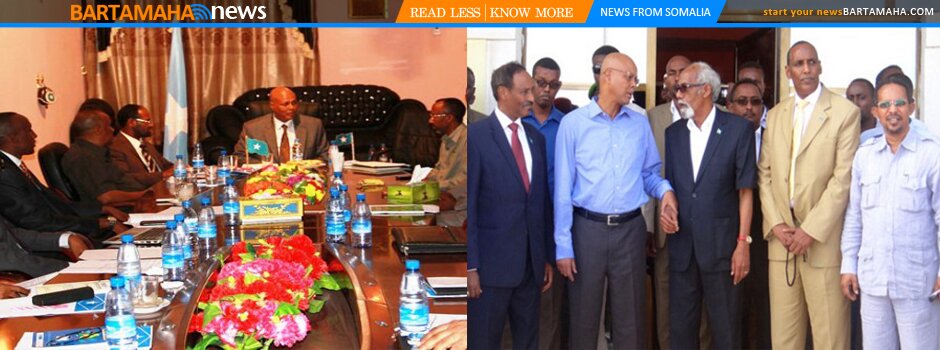Ten Somali children a day die in Ethiopia’s Kobe refugee camp
![]() www.Bartamaha.com UN reports ‘alarming’ figures as fresh questions are raised about al-Shabaab rebels’ responsibility for the impact of the famine
www.Bartamaha.com UN reports ‘alarming’ figures as fresh questions are raised about al-Shabaab rebels’ responsibility for the impact of the famine
Somali refugee Mohamed Ibrahim (right) prepares to bury his one-year-old son, who died of malnutrition in Ethiopia’s Kobe refugee camp. Photograph: Jenny Vaughan/AFP/Getty Images
Ten Somali children under the age of five are dying every day of hunger-related causes in a refugee camp in Ethiopia, according to the UN refugee agency.
UNHCR reported the “alarming” increase in the number of deaths at Kobe camp after completing an assessment this week. The main cause was malnutrition, although a measles outbreak has contributed to the high mortality rate.
The camp, one of four in Dollo Adow in south-east Ethiopia, opened in June when Somalis fleeing drought and conflict poured over the border in large numbers. Kobe reached its 25,000 capacity in a month, and while new arrivals from Somalia are being directed elsewhere the death toll is not slowing.
In a briefing in Geneva, UNHCR said the average of ten deaths a day stretched back to late June, meaning that at least 500 young children had died in less than two months.
Most of the Somali refugees arriving in Ethiopia are from rural areas, and many have never used formal health facilities before. Ron Redmond, a UNHCR spokesman in Nairobi, said this was a factor in the high death rate because parents did not know what to do with their malnourished children, even after receiving initial treatment and handouts of therapeutic food.
“Parents are told they need to sustain the supplementary feeding but they don’t always do it,” said Redmond. “Ensuring that they treat their kids and bring them back to health centres in a large camp is difficult and labour intensive.”
Separately, some 17,500 Somalis have crossed into the Gode and Afder areas of Ethiopia, 150 miles north-east of Dollo Adow, in the past six weeks.
The continued exodus and growing death toll from the famine in Somalia is raising fresh questions about the culpability of the al-Shabaab insurgent group, which controls most of the southern part of the country. Though the causes of the famine or near-famine conditions in southern Somalia are numerous – including drought, high food prices and the absence of a government for two decades – the al-Qaida-linked Islamist movement has played a significant role.
Initially known for its effective guerrilla campaign against occupying Ethiopian forces, al-Shabaab became increasingly extreme once the enemy withdrew, with militants enforcing mosque attendance and carrying out amputations and stonings of alleged criminals, some of them teenagers. By assassinating local journalists, they ensured that the motivations and makeup of their forces have remained murky.
In 2009, al-Shabaab banned a number of aid groups, including the UN World Food Programme, for alleged offences ranging from spying to being anti-Muslim and distorting the local economy. Numerous humanitarian workers were also killed, ensuring that even groups with permission to work had to scale back their activities and withdraw non-Somali staff.
The restrictions and security concerns meant millions of Somalis had no safety net when the drought really began to bite early this year. In the worst-hit areas, there was no food distribution or help in obtaining water.
In early July the rebels said all aid agencies would be allowed to assist with drought relief, but then backtracked, saying the earlier ban on certain organisations stood. They also denied that famine was occurring.
Interviews with refugees who fled Somalia for Kenya revealed that in some areas al-Shabaab militias had tried to prevent people from leaving to seek outside help, even those pushed close to death by hunger. A new report by Human Rights Watch confirmed these findings.
Despite withdrawing the bulk of their forces from Mogadishu earlier this month in a “tactical” move, al-Shabaab still controls most of southern Somalia. While more aid is getting into the country, some of the worst-affected areas are still without assistance.
Comments
comments
 Calendar
Calendar






































